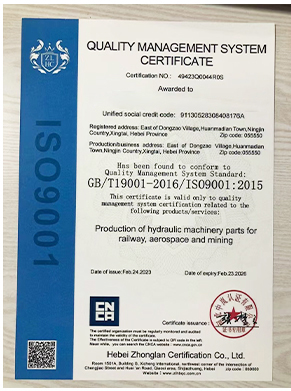- Arabic
- French
- Russian
- Spanish
- Portuguese
- Turkish
- Armenian
- English
- Albanian
- Amharic
- Azerbaijani
- Basque
- Belarusian
- Bengali
- Bosnian
- Bulgarian
- Catalan
- Cebuano
- Corsican
- Croatian
- Czech
- Danish
- Dutch
- Afrikaans
- Esperanto
- Estonian
- Finnish
- Frisian
- Galician
- Georgian
- German
- Greek
- Gujarati
- Haitian Creole
- hausa
- hawaiian
- Hebrew
- Hindi
- Miao
- Hungarian
- Icelandic
- igbo
- Indonesian
- irish
- Italian
- Japanese
- Javanese
- Kannada
- kazakh
- Khmer
- Rwandese
- Korean
- Kurdish
- Kyrgyz
- Lao
- Latin
- Latvian
- Lithuanian
- Luxembourgish
- Macedonian
- Malgashi
- Malay
- Malayalam
- Maltese
- Maori
- Marathi
- Mongolian
- Myanmar
- Nepali
- Norwegian
- Norwegian
- Occitan
- Pashto
- Persian
- Polish
- Punjabi
- Romanian
- Samoan
- Scottish Gaelic
- Serbian
- Sesotho
- Shona
- Sindhi
- Sinhala
- Slovak
- Slovenian
- Somali
- Sundanese
- Swahili
- Swedish
- Tagalog
- Tajik
- Tamil
- Tatar
- Telugu
- Thai
- Turkmen
- Ukrainian
- Urdu
- Uighur
- Uzbek
- Vietnamese
- Welsh
- Bantu
- Yiddish
- Yoruba
- Zulu
Дек . 12, 2024 00:54 Back to list
industrial timing belt
Understanding Industrial Timing Belts An Essential Component for Mechanical Systems
In the realm of mechanical engineering and industrial applications, timing belts play a crucial role in the efficient operation of machines and production lines. These components are integral to the functioning of various mechanisms, transmitting motion and power between different parts of machinery. Understanding industrial timing belts, their applications, and the factors to consider when choosing them is essential for engineers, technicians, and maintenance personnel.
What is a Timing Belt?
A timing belt is a looped strip of material, typically made from rubber or other synthetic materials, that features teeth on its inner surface. These teeth mesh with corresponding grooves on pulleys, allowing for precise synchronization between the rotation of the belt and the rotation of the driven components. This characteristic makes timing belts ideal for applications requiring consistent timing and positioning, such as in camshaft and crankshaft systems in engines, conveyor systems, and various automated machinery.
Applications of Timing Belts in Industry
Timing belts are ubiquitous in various industrial applications due to their reliability and efficiency. Here are some key areas where they are commonly used
1. Automotive Industry In vehicles, timing belts are crucial for regulating the timing of engine components, ensuring that the crankshaft and camshaft operate in sync. This synchronization is vital for optimal engine performance and efficiency.
2. Manufacturing and Automation In manufacturing, timing belts drive conveyor systems that transport goods along production lines. Their precision helps maintain consistent speeds, reducing the risk of jams or bottlenecks.
3. Textile and Paper Industries Timing belts are used in textile machinery and printing presses to ensure precise movement of materials and components, which is essential for maintaining quality and reducing waste.
4. Robotics In robotic systems, timing belts facilitate smooth and accurate motion control, which is critical for tasks involving intricate movements or assembly processes.
Advantages of Using Timing Belts
The use of timing belts in mechanical systems comes with several advantages
industrial timing belt

- Precision The tooth design ensures minimal slippage during operation, allowing for precise control over the movement of components.
- Low Maintenance Unlike chain drives or gear systems, timing belts produce less noise and require less frequent lubrication, leading to lower maintenance costs.
- Flexibility Timing belts can be manufactured in various sizes and configurations, making them adaptable to a wide range of applications.
- Durability High-quality timing belts are designed to withstand challenging conditions, including high temperatures and potential chemical exposure, contributing to their longevity.
Selecting the Right Timing Belt
When selecting a timing belt for a specific application, several factors should be considered
1. Material Composition Depending on the operating environment, the material of the timing belt can vary. For high-stress applications, belts made from reinforced materials may be necessary to withstand wear and tear.
2. Belt Profile Timing belts come in various profiles (e.g., trapezoidal, rounded), which should be chosen based on the application requirements and the pulleys they will engage with.
3. Load Capacity Understanding the weight and load the timing belt will need to handle is crucial. Overloading a belt can lead to premature failure.
4. Environmental Conditions Factors such as temperature, humidity, and exposure to chemicals or abrasives can affect the performance and lifespan of a timing belt. Selecting a belt designed for the specific operating environment is essential.
Conclusion
In summary, industrial timing belts are vital components that contribute to the efficiency and reliability of mechanical systems across numerous industries. Their unique characteristics enable them to provide precise motion control, making them indispensable for applications ranging from automotive engines to automated manufacturing processes. A thorough understanding of their construction, advantages, and selection criteria ensures that engineers and technicians can make informed decisions, ultimately enhancing the performance and longevity of the equipment they maintain. Investing in high-quality timing belts and adhering to regular maintenance practices can lead to significant improvements in operational efficiency and reduced downtime in industrial settings.
-
Korean Auto Parts Timing Belt 24312-37500 For Hyundai/Kia
NewsMar.07,2025
-
7PK2300 90916-T2024 RIBBED BELT POLY V BELT PK BELT
NewsMar.07,2025
-
Chinese Auto Belt Factory 310-2M-22 For BMW/Mercedes-Benz
NewsMar.07,2025
-
Chinese Auto Belt Factory 310-2M-22 For BMW/Mercedes-Benz
NewsMar.07,2025
-
90916-02660 PK Belt 6PK1680 For Toyota
NewsMar.07,2025
-
drive belt serpentine belt
NewsMar.07,2025

